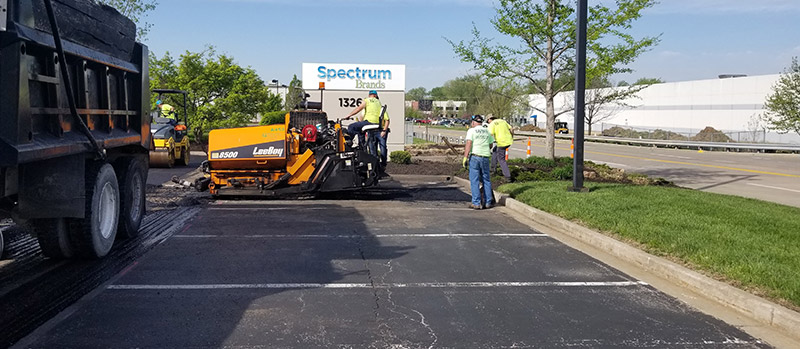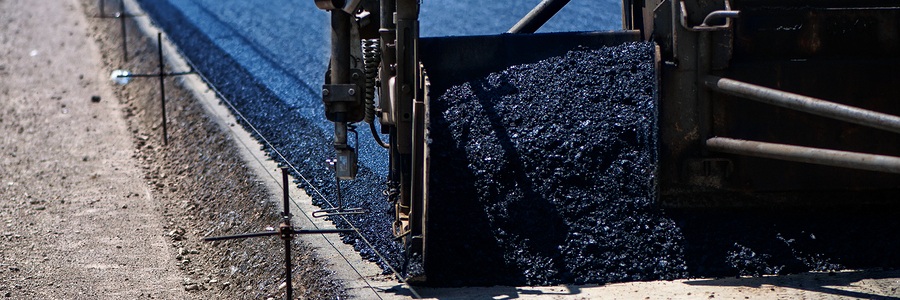The smart Trick of A1 Professional Asphalt & Sealing Llc That Nobody is Discussing
The smart Trick of A1 Professional Asphalt & Sealing Llc That Nobody is Discussing
Blog Article
3 Easy Facts About A1 Professional Asphalt & Sealing Llc Described
Table of ContentsThe 6-Second Trick For A1 Professional Asphalt & Sealing LlcThe Greatest Guide To A1 Professional Asphalt & Sealing LlcThe 9-Minute Rule for A1 Professional Asphalt & Sealing LlcHow A1 Professional Asphalt & Sealing Llc can Save You Time, Stress, and Money.Rumored Buzz on A1 Professional Asphalt & Sealing Llc

The oil in a car engine is not simply oil. It contains a range of additives to improve the automobile's efficiency. These consist of polymers, thickness modifiers, warm stabilizers, added lubricants, and put on ingredients. The REOB consists of all the additives that were in the waste oil in addition to the wear metals from the engine (mostly iron and copper).
By making several blends making use of different REOB examples and various asphalt binders, the variations largely can be averaged out. Numerous States gave samples of well-known REOB structure to TFHRC scientists, who evaluated the samples to compare the portion of included (understood) REOB to the found (evaluated) amount. The evaluations showed a comparable percent of included and found REOB.
3 Easy Facts About A1 Professional Asphalt & Sealing Llc Described
None of those States recognized that the asphalt they were getting included REOB. One State insisted its samples had no REOB - https://www.webtoolhub.com/profile.aspx?user=42388970.
Of the 1,532 samples evaluated, 12 percent consisted of REOB, and some contained considerably high degrees of it at 1020 percent. The highest degree was 34 percent in an example from Texas, which TxDOT had utilized in a patching compound. This testing additionally disclosed the visibility of phosphoric acid in 11 percent of the samples, and 2 percent contained ground tire rubber.
2 years back at TRB's yearly conference, the Federal scientists held an REOB workshop and presented the findings of their research laboratory examinations to a standing room-only crowd. Although some firms do not particularly outlaw REOB, they do impose physical examinations that preclude its useeffectively a restriction. diagonal parking vs straight parking. Others do not outlaw it by spec, but have agreements with asphalt providers to prevent making use of REOB
All about A1 Professional Asphalt & Sealing Llc
A handful do permit REOB, some within particular restrictions. Ohio and Texas limit degrees to less than 5 percent of the asphalt. To develop a reliable examination technique that all States can use, the TFHRC scientists established up a round-robin test plan. The participants are 11 State highway companies (Illinois, Massachusetts, Minnesota, Mississippi, Montana, North Carolina, Oklahoma, South Carolina, Texas, Vermont, and Wyoming), 2 independent screening labs, the Ministry of Transportation in Ontario, Queen's College in Ontario, and an Ontario paving specialist.
In overall, the researchers prepared and delivered 720 blends. The participants are checking the examples independently using the standards given by the TFHRC researchers. The round-robin testing is virtually finished, and TFHRC is in the process of collecting the outcomes. The output will certainly be a recommended AASHTO test method that any State can take on and utilize (what is cold mix asphalt).
The pavement with REOB, which lies 0.6 mile (1 kilometer) from the sidewalk without REOB, has identical subgrade, website traffic thickness, and environment. Nonetheless, the sector of Highway655 with 5 to 10 percent REOB revealed significant breaking. In this example, the presence of REOB was the identified root cause of cracking at a reduced temperatures.
"In our experience in Canada, also small amounts of 23 percent can be an issue." A section of test pavement in Minnesota (MN1-4) discovered to consist of REOB also broke prematurely. The sidewalk done well for the first 3 to 4 years, but after that started to break. This sidewalk is also based on low temperature levels.
Facts About A1 Professional Asphalt & Sealing Llc Uncovered
The tests were not extensive, yet they showed that at levels of 6 percent or more, the tensile strength of the asphalt went down considerably. At a degree of 3.5 percent REOB, the variation in the physical test techniques was above the effect of REOB. In truth, it was challenging for researchers to evaluate whether REOB was existing.

One binder criterion taken into consideration is the difference between the reduced temperature level essential specification temperature for rigidity (S) in the flexing beam of light rheometer and the flexing beam of light rheometer creep slope (m-value) kept in mind as Tcritical. TC = TC (S) TC (m-value). Analysis of this parameter is still continuous. Two independent research groups, one from AASHTO and the other from the Asphalt Institute, concluded that more study is needed on using REOB in asphalt.
Previously, all asphalt screening determined design buildings such as rigidity. These tests do not reveal what materials had been contributed to the asphalt. One example obtained during the TFHRC research study had a really odd analysis. The sample had the complying with test outcomes: Superpave PG 64-28 with a heat grade of 67.3 Tcritical on the flexing beam rheometer was 6.7 levels Celsius.

Not known Details About A1 Professional Asphalt & Sealing Llc
These outcomes demonstrate there are weak points in the standardized design screening methods that might be exploited. The producer may have an economic advantage and the product passes all the standardized tests, yet the item may not be helpful to guaranteeing long-lasting efficiency. To resolve this issue and the development of new asphalt ingredients and extenders, TFHRC is beginning a study program to use portable spectroscopic tools, x-ray fluorescence spectroscopy, and Fourier transform infrared spectroscopy to enable analyses to be performed in the area as opposed to needing to take examples back to the laboratory.
Report this page